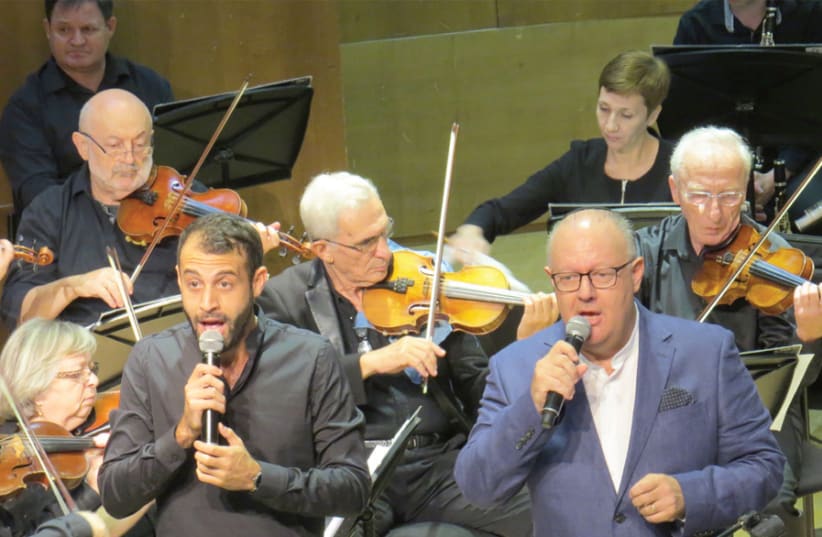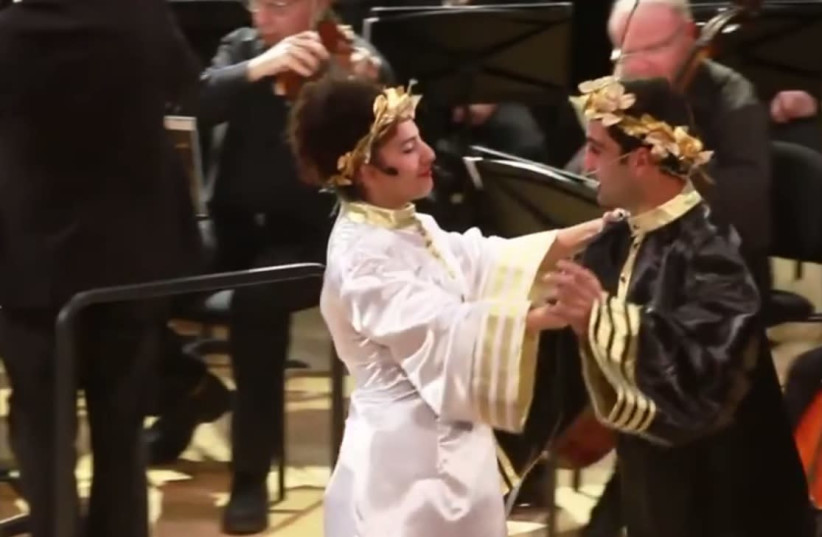During the second concert of its 2021-22 season, the Raanana Symphonette took its audience for an evening into the world of chamber music. The orchestra had a night off and this evening’s performing ensemble was made up of four of Israel’s internationally known top musicians who came together for this performance: Asi Matathias, violin, Ori Kam, viola, Zvi Plesser, cello, and Victor Stanislavsky, piano. Each has a distinguished career as soloist, chamber musician and teacher both in Israel and in international forums.
As they took their places on the front edge of the stage in Ra’anana’s acoustically fine tuned auditorium and raised their hands in readiness, “magic” began to happen. First and foremost, one felt their attention to each other, as well as a desire to work as a unit while involving the audience in this intimate form of music-making. Through a word to the audience, body language, eye contact, the lift of an eyebrow, a hint of a smile, they communicated to each other, and the audience saw and felt a part of their music.
The ensemble opened the concert with the Piano Quartet in E Flat Major, op.16, by Ludwig van Beethoven. Beethoven arranged this piano quartet himself from a wind quintet he had written previously. It is one of the most classical sounding of his chamber works, both in form as well as a transparent quality reminiscent of Mozart.
However, one also hears Beethoven’s stamp of widening the musical ideas, deepening of texture, as well as his strength and humor. In this quartet the pianist is the “star,” and pianist Stanislavsky demonstrated his fine technical skills while balancing his dynamics to allow the solos of the string players to shine through.
Next was the Serenade for String Trio in C minor by Hungarian composer Erno Dohnanyi (1877-1960). This is an early 20th century, five-movement suite in which the composer leads the listener, rather gently, into the new areas and new musical ideas of the 20th century. Although Dohnanyi’s contrapuntal texture is based in the foundation of centuries of music composition, his use of dissonance, angular melodies and rhythmic ingenuity set it apart.
The Rondo Allegro Vivace movement passed like a flash as the members of the ensemble demonstrated their technical skills both as soloists and as a working unit. In the slow movement of the suite, it was refreshing to hear Dohnanyi’s beautiful melodies, sometimes unabashedly sentimental, come to the forefront. He did not seem to care their beauty was the antithesis to new waves of music, and, to this listener’s ear, they were some of the most pleasing moments of the evening.
Closing the program was Piano Quartet No. 2 in E Flat Major op.87 by Antonin Dvorák. Written in 1889, its rich harmonies, lyric melodies and Slavonic elements soared throughout the movements, as the four distinguished and super-talented members of the ensemble filled the concert hall with glorious music.

